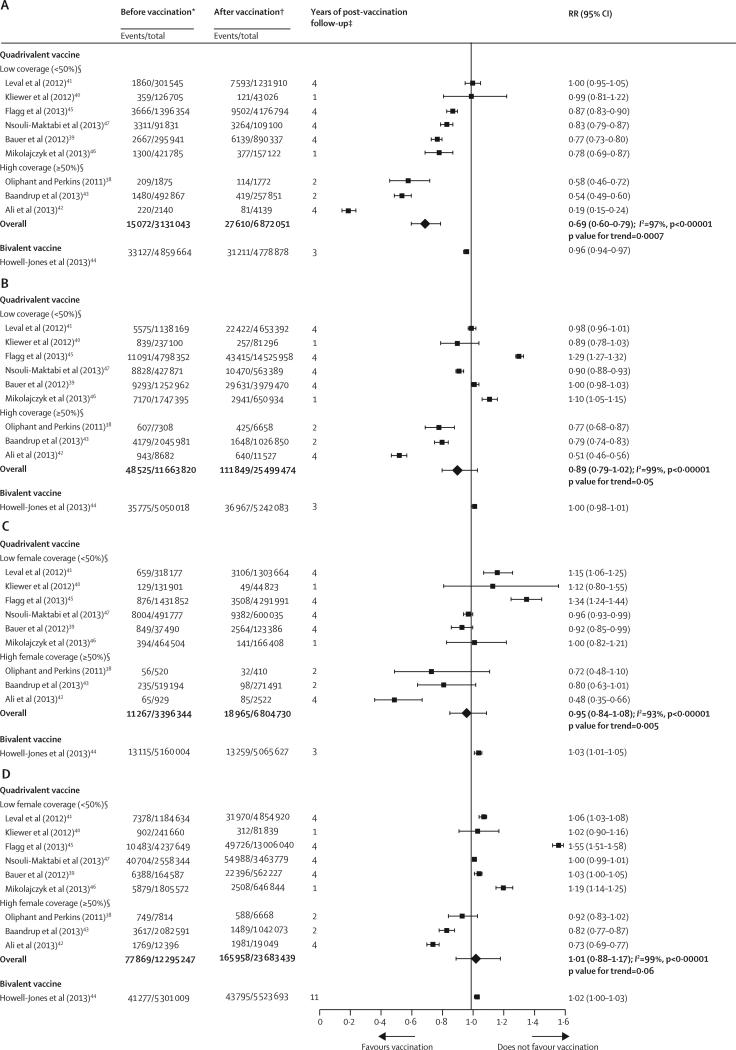Figure 4.
Changes in anogenital wart diagnosis between the pre-vaccination and post-vaccination periods in (A) girls aged 15–19 years, (B) women aged 20–39 years, (C) boys aged 15–19 years, and (D) men aged 20–39 years, ranked by the national or setting-specific female vaccination coverage
RR=relative risk. p values for trends were obtained by fitting a linear regression between the log RR and the rank of vaccination coverage of each study, weighted by the inverse variances of the log RR. *Before vaccination: cumulative number of cases and person-years up to 3 years pre-vaccination, including the year of the introduction of the human papillomavirus (HPV) vaccine. †After vaccination: cumulative number of cases and person-years 1–4 years after the introduction of vaccination, depending on data available in each study. ‡Years of post-vaccination follow-up: number of years after the introduction of HPV vaccination considered in the meta-analysis (see appendix pp 10–11 for more details). §Studies were ranked qualitatively by the national or setting-specific vaccination coverage, for which we considered the number of cohorts vaccinated and vaccination coverage achieved in each cohort. However, we could not estimate the overall vaccination coverage for each study (see appendix pp 2–4 for details about the programme description, number of cohorts vaccinated, and three-dose vaccination coverage for each study).

